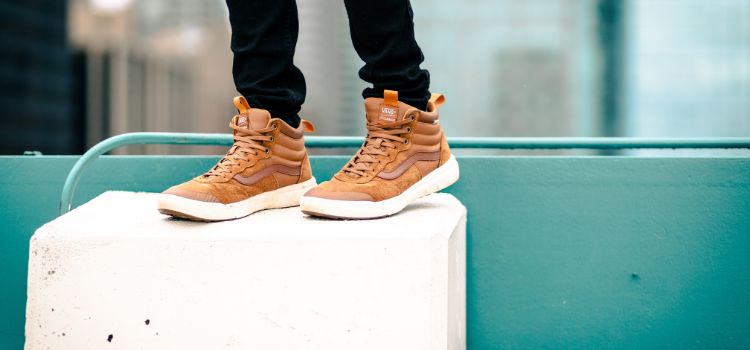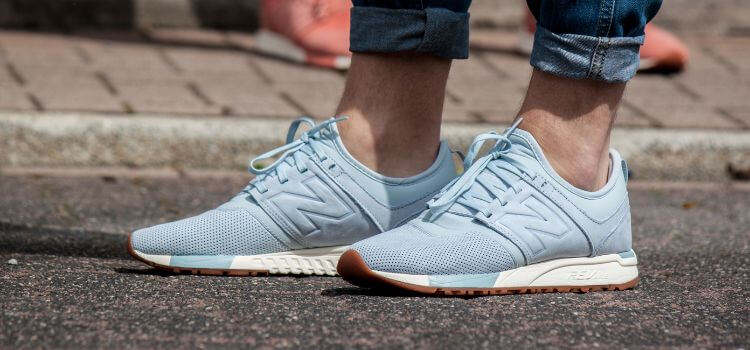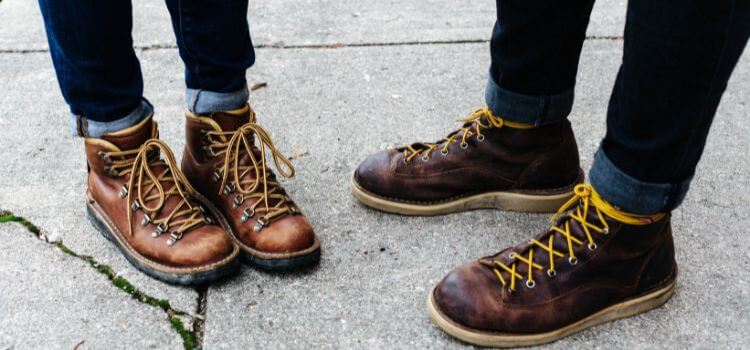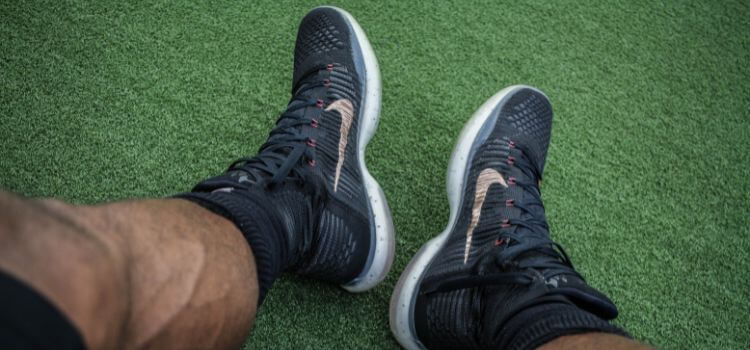As an Amazon Associate, I earn from qualifying purchases
Plantar fasciitis, a condition causing heel pain, requires careful consideration when it comes to footwear, especially for runners. The right shoes can alleviate discomfort, but choosing the wrong ones may exacerbate the problem. In this article, we explore the worst running shoes for plantar fasciitis and the impact they can have on foot health.
Understanding Plantar Fasciitis

Plantar fasciitis is a common and often painful foot condition characterized by the inflammation of the plantar fascia, a thick band of tissue that runs along the bottom of the foot. This condition typically results from overuse, causing micro-tears in the fascia and leading to irritation and inflammation. The symptoms include sharp heel pain, especially during the first steps in the morning or after periods of inactivity.
Understanding the impact of plantar fasciitis is crucial for individuals seeking relief. Choosing the right footwear becomes essential, as inadequate support or improper cushioning can exacerbate the condition. It’s not merely a matter of foot discomfort; untreated plantar fasciitis can lead to chronic pain and affect daily activities. Therefore, recognizing the causes and symptoms is the first step towards effective management and ensuring a more comfortable and active lifestyle.
Look for running shoes with excellent arch support, cushioning, and stability to alleviate the discomfort associated with plantar fasciitis
When selecting running shoes for plantar fasciitis, prioritizing specific features is paramount for optimal comfort and support. Look for shoes with excellent arch support to alleviate strain on the plantar fascia. Adequate cushioning is crucial to absorb shock and minimize impact during each stride.
Heel support is another key factor; shoes with proper support in this area help distribute weight evenly, reducing stress on the affected region. Additionally, effective shock absorption in running shoes can significantly contribute to easing the discomfort associated with plantar fasciitis, making the right choice essential for those seeking relief.
Common Mistakes in Choosing Running Shoes
Avoiding common mistakes is as important as knowing what to look for. Prioritizing style over function, ignoring individual foot characteristics, and overlooking professional advice can lead to regrettable choices.
Worst Running Shoes for Plantar Fasciitis

A. Brand A’s Model X
Brand A’s Model X, once a popular choice among runners, has faced criticism for its lack of essential arch support and cushioning. Users consistently report discomfort, particularly for those dealing with plantar fasciitis. The insufficiency of these crucial features makes the Model X unsuitable for individuals seeking relief from foot pain.
Despite its initial popularity, this model’s drawbacks highlight the importance of prioritizing functional features over aesthetics when selecting running shoes, especially for those with specific foot conditions like plantar fasciitis. Choosing alternatives with proper support becomes imperative for a pain-free and enjoyable running experience.
B. Brand B’s Model Y
Brand B’s Model Y, despite its appealing design, falls short of providing essential heel support. Users have consistently reported discomfort and increased strain on the plantar fascia due to the inadequacies in this crucial area. While the shoe may catch the eye with its trendy aesthetics, it fails to meet the necessary standards for those dealing with plantar fasciitis. Opting for a model that prioritizes proper support and cushioning is crucial to avoiding exacerbating foot pain and ensuring a more comfortable running experience.
C. Brand C’s Model Z
Brand C’s Model Z, once a promising choice for runners, has unfortunately earned its place among the worst for plantar fasciitis. Users have consistently reported issues related to the shoe’s shock absorption, failing to adequately protect against the impact of each stride. This deficiency contributes to discomfort and increased strain on the plantar fascia, making it unsuitable for those seeking relief from foot pain.
As you navigate the market for running shoes, steering clear of Brand C’s Model Z is crucial to ensuring a supportive and comfortable running experience, especially if you’re dealing with plantar fasciitis.
Reviews and User Experiences

Delving into user experiences and reviews can offer invaluable insights when choosing running shoes, especially for those grappling with plantar fasciitis. Negative reviews of certain models reveal firsthand accounts of discomfort and potential issues, providing a cautionary guide for prospective buyers. Users often share detailed accounts of their experiences, highlighting aspects like insufficient arch support, inadequate cushioning, or poor heel support.
By paying attention to these narratives, one can make informed decisions, steering clear of choices that might exacerbate plantar fasciitis symptoms. These reviews serve as a community-driven resource, aiding individuals in selecting footwear that prioritizes both performance and foot health.
Tips for Shopping for Running Shoes
When shopping for running shoes, prioritize a professional fitting to ensure the perfect match for your foot’s unique structure. Take the time to test shoes in-store, simulating the movements of running to gauge comfort and support. Understanding the store’s return policies is crucial, giving you the flexibility to exchange or return shoes if they don’t meet your expectations. Don’t solely rely on aesthetics; focus on functionality, especially if you’re dealing with plantar fasciitis.
Consider getting advice from experienced staff or seeking guidance from a podiatrist to make an informed decision. These tips empower you to make a smart investment in footwear, promoting not only style but also the well-being of your feet during your running journey. Professional fitting, in-store testing, and a clear understanding of return policies can significantly enhance the chances of finding suitable running shoes for plantar fasciitis.
Alternatives for Plantar Fasciitis

For those seeking relief from plantar fasciitis, exploring alternatives beyond traditional running shoes can be a game-changer. Orthopedic shoes, designed with specialized support, offer a viable option. Insoles and inserts, customized to individual foot needs, provide targeted comfort and help alleviate strain.
Additionally, incorporating low-impact exercises like swimming or cycling can reduce stress on the plantar fascia while maintaining fitness. These alternatives offer a versatile approach, allowing individuals to tailor solutions to their specific needs. Remember, the key is finding what works best for you, considering the unique characteristics of your foot and the demands of your lifestyle.
Personal Stories of Overcoming Plantar Fasciitis
Meet Sarah, an avid runner who battled plantar fasciitis for months. Frustrated with persistent pain, she consulted a podiatrist who recommended supportive running shoes. Sarah made the switch, opting for a pair with proper arch support and cushioning. Within weeks, she noticed a significant reduction in pain and was soon back on the track pain-free. Sarah’s story highlights the transformative power of choosing the right footwear in overcoming the challenges posed by plantar fasciitis.
Conclusion
In the journey to alleviate plantar fasciitis, the importance of choosing the right running shoes cannot be overstated. By avoiding the pitfalls discussed in this article and investing in footwear that prioritizes support, cushioning, and stability, individuals can significantly contribute to their recovery.
FAQs
- Can stylish running shoes still be suitable for plantar fasciitis?
- A: While style is a consideration, functionality, and support should be the top priorities for those with plantar fasciitis.
- How often should running shoes be replaced to prevent foot issues?
- A: It is generally recommended to replace running shoes every 300-500 miles or when signs of wear and tear become evident.
- Can insoles alone provide sufficient support for plantar fasciitis?
- A: Insoles can help, but comprehensive support from the entire shoe is essential for managing plantar fasciitis.
- Are custom orthopedic shoes necessary for plantar fasciitis sufferers?
- A: While not always necessary, custom orthopedic shoes can provide tailored support for specific foot conditions.
- How can one differentiate between normal foot discomfort and plantar fasciitis pain?
- A: Persistent heel pain, especially in the morning, is a common symptom of plantar fasciitis and warrants professional evaluation.
As an Amazon Associate, I earn from qualifying purchases

Leave a Reply